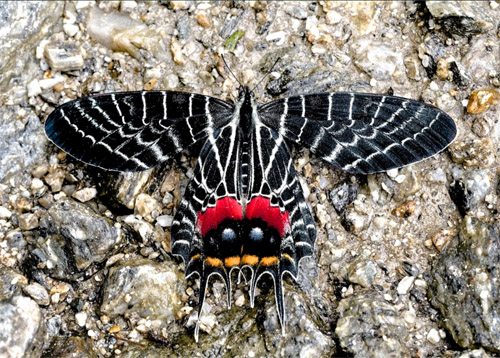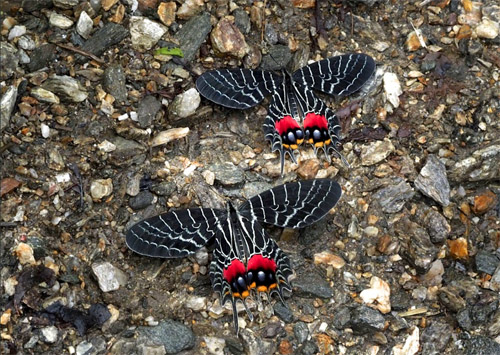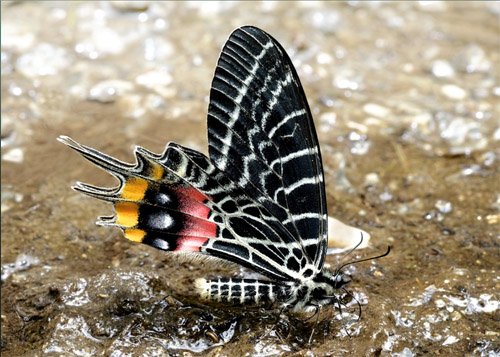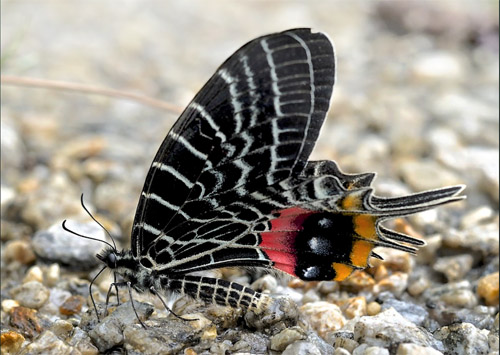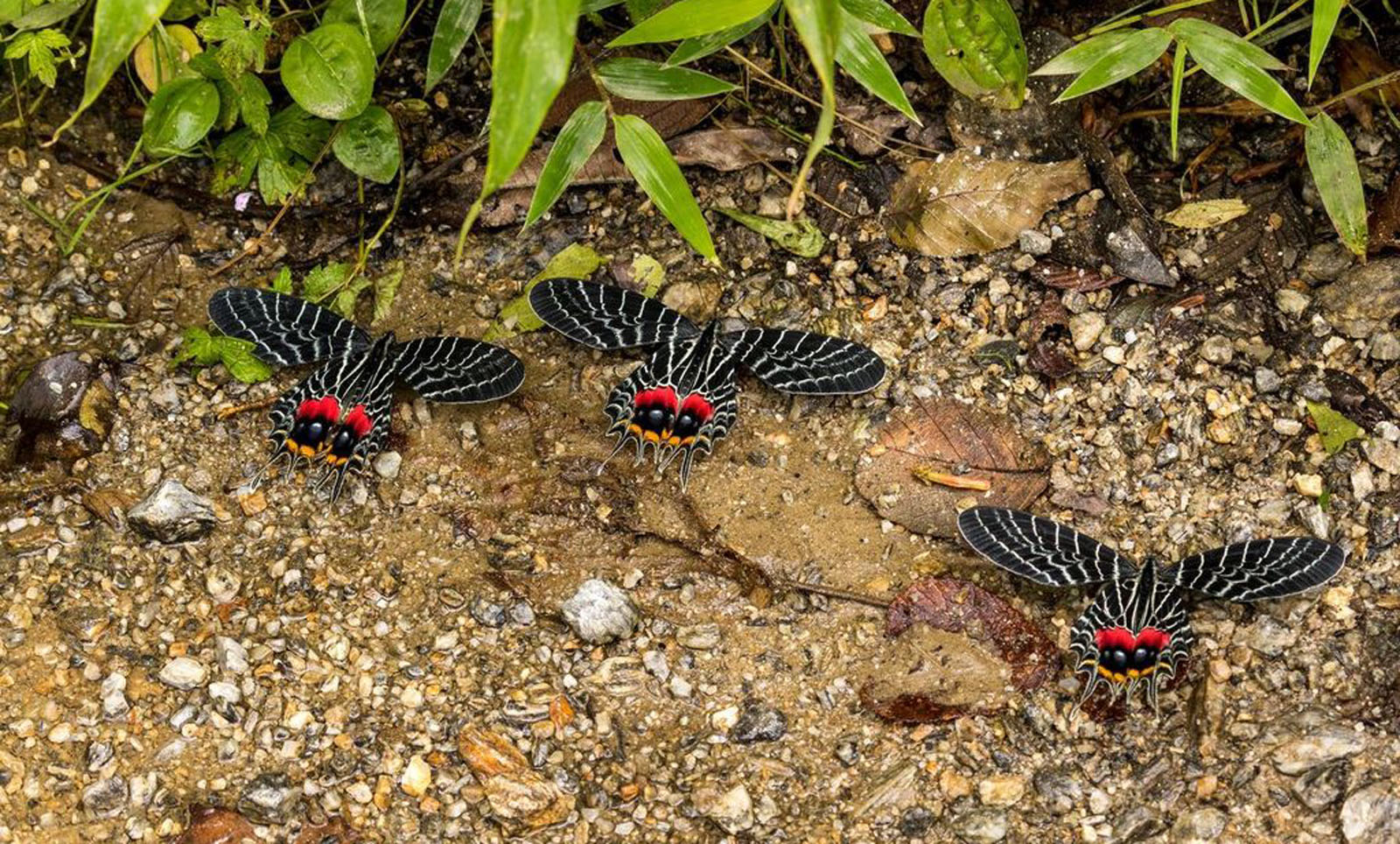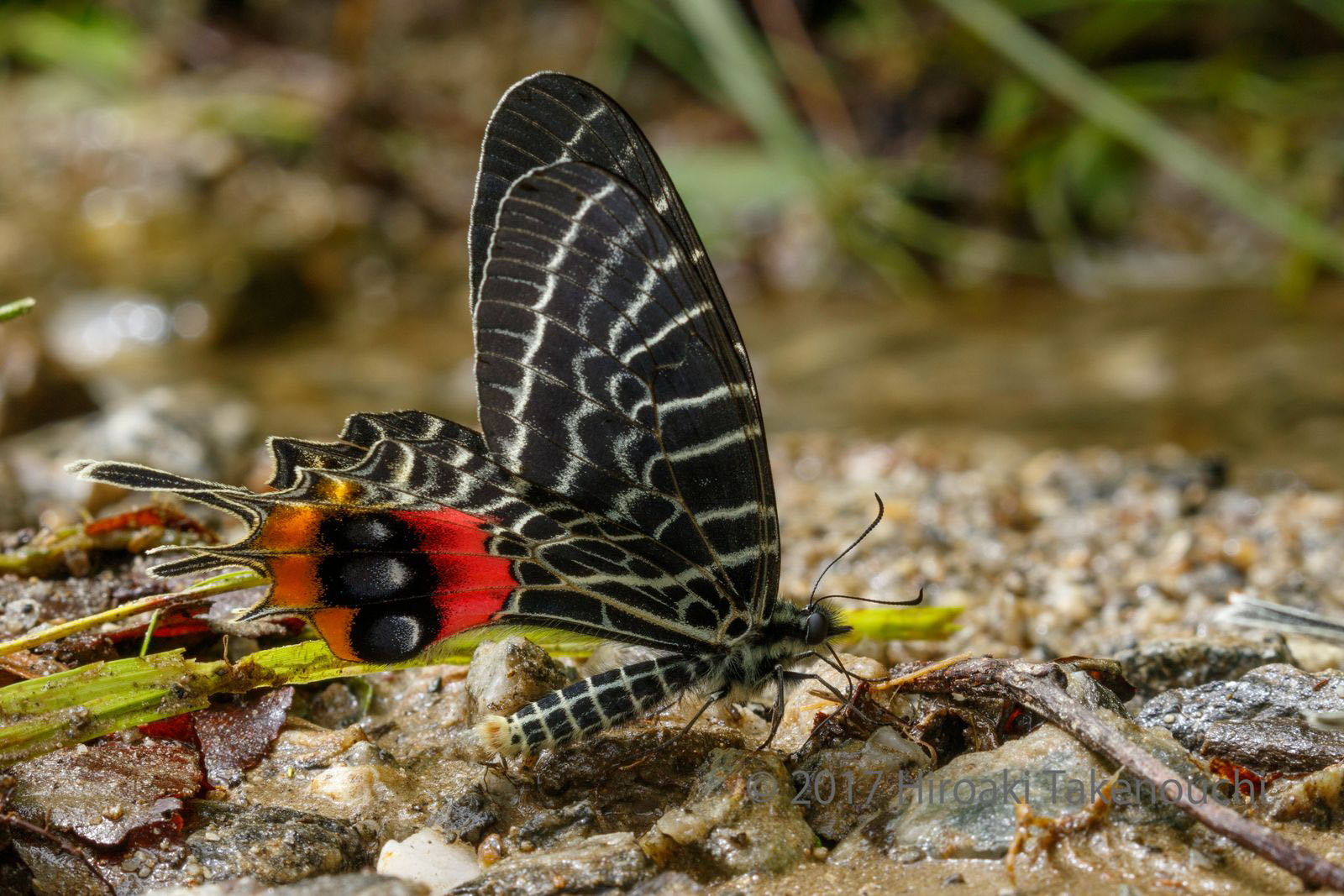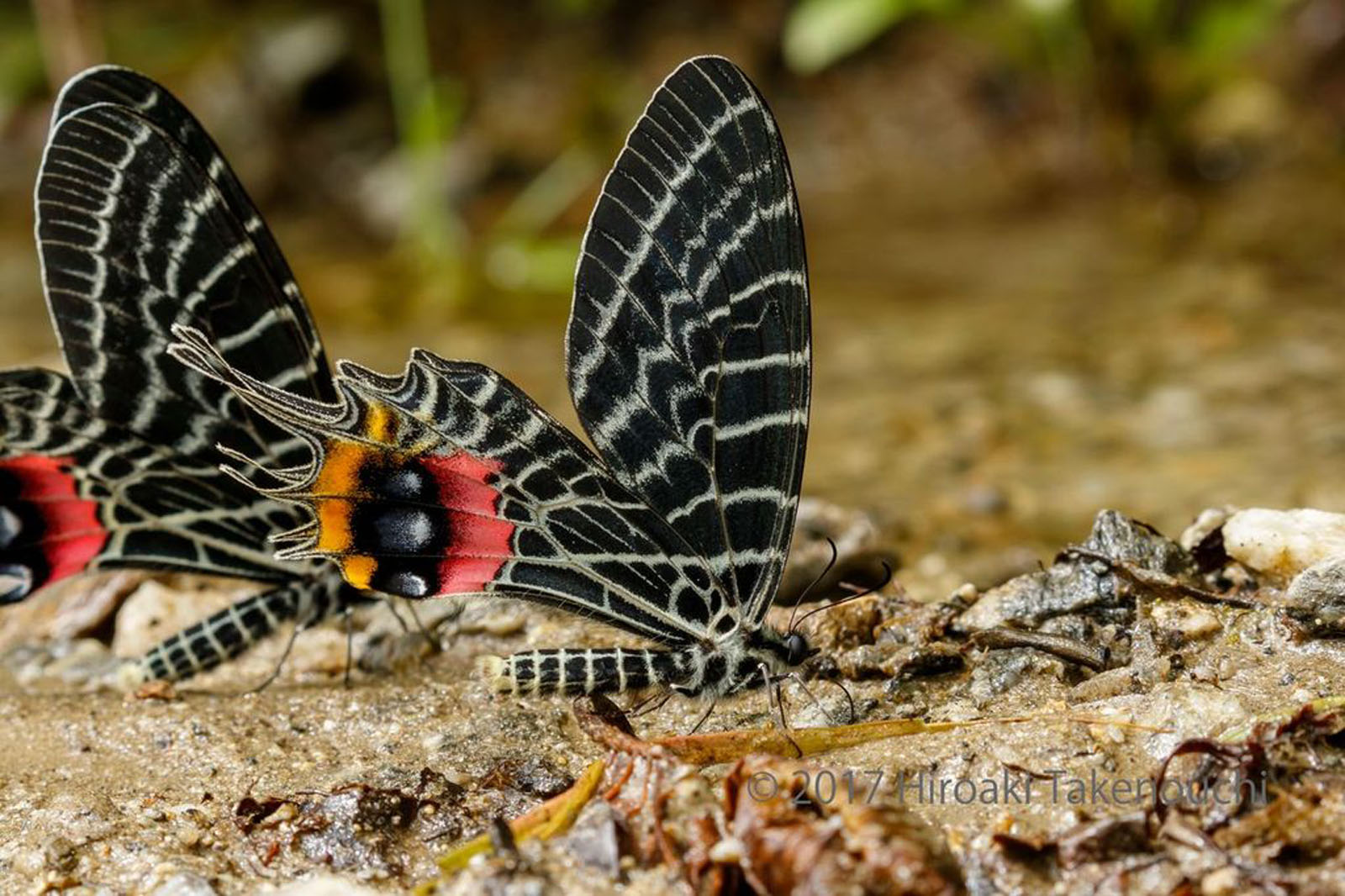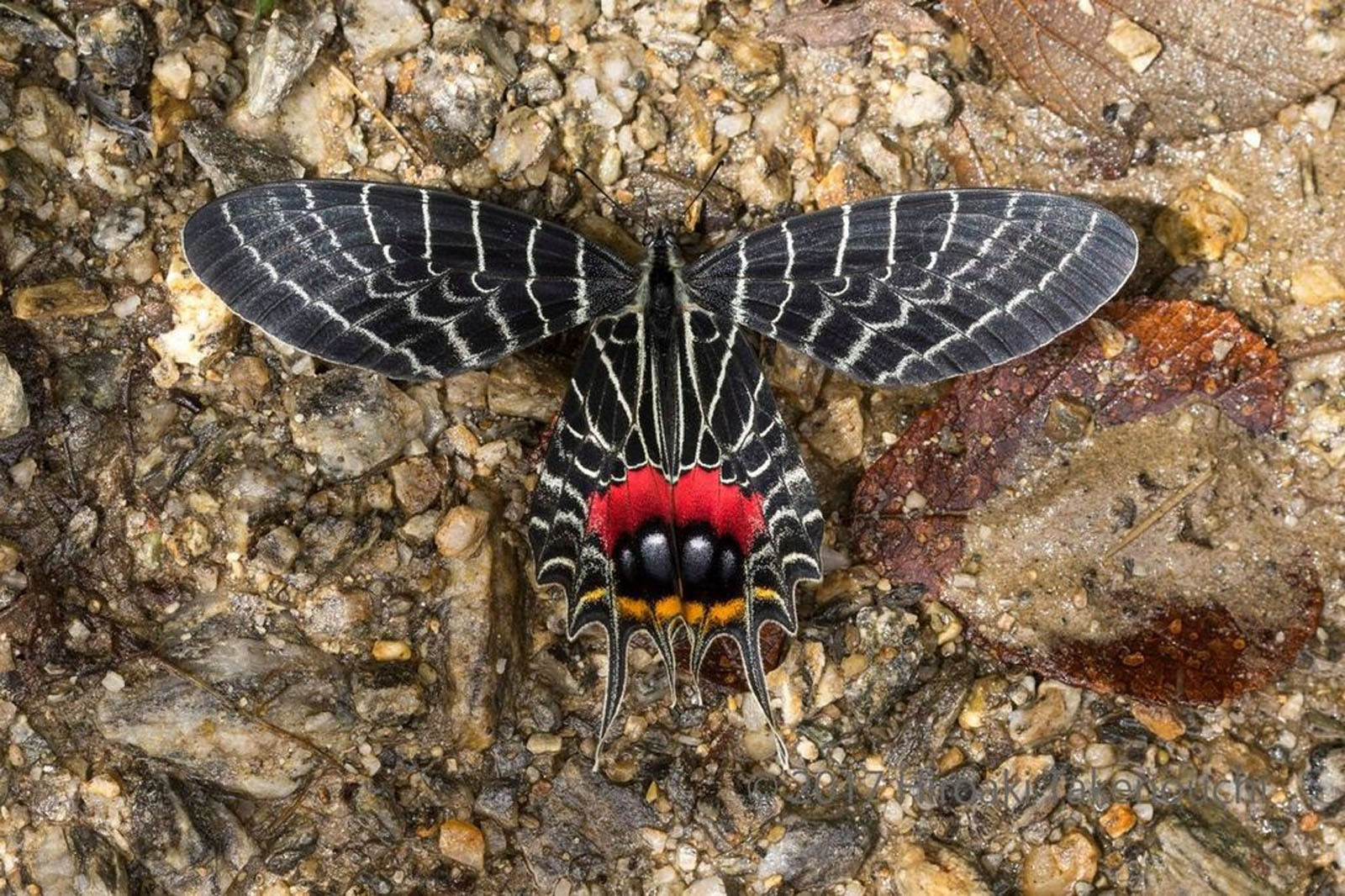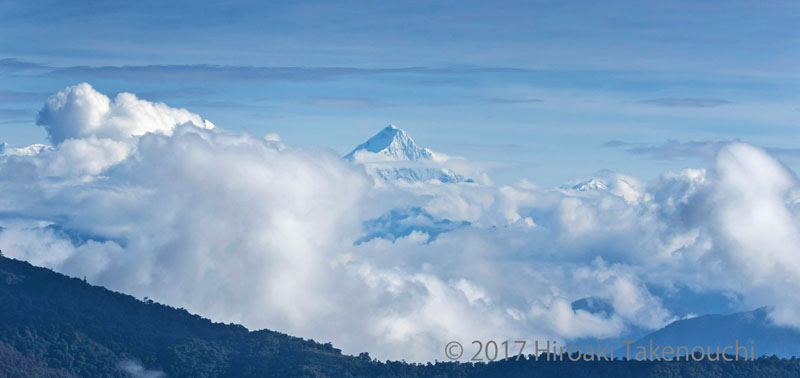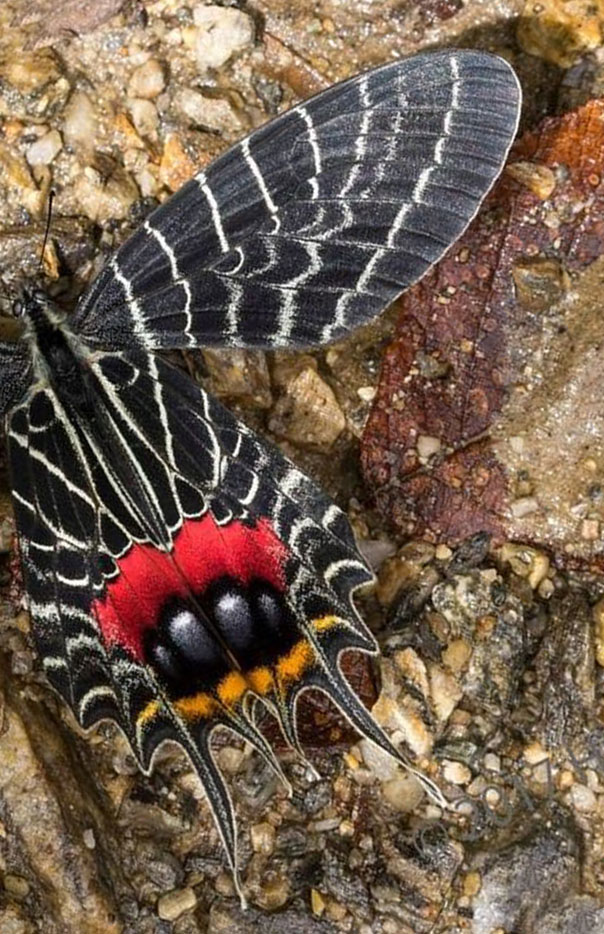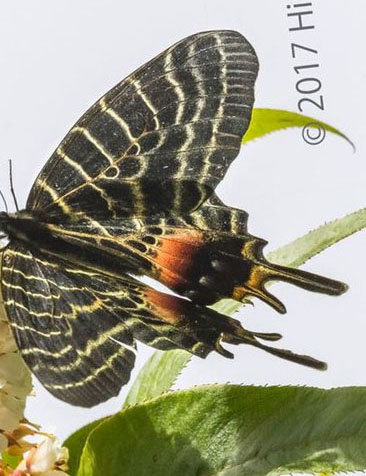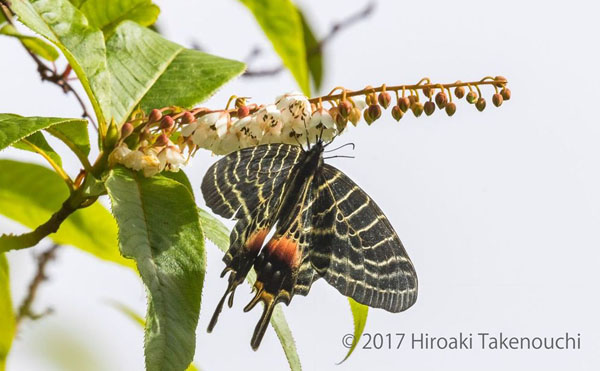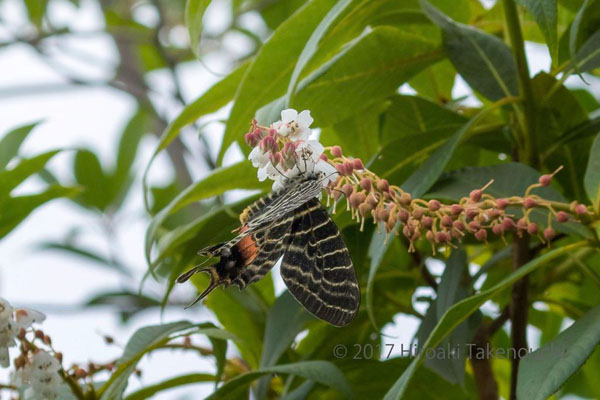Bhutan's Glorie
Bhutanitis lidderdalii
first update d. 8 december 2022
last update d. 2 october 2024
Bhutan's Glorie, Bhutanitis lidderdalii (Atkinson, 1873).
Eagles
Nest 2000m., Arunachal Pradesh, Indien d. 27 - 30 august
2017.
Photographer; Pamela Donaldson
Bhutan's Glorie, Bhutanitis lidderdalii (Atkinson, 1873). Appearance: On the upper side
black with thin white bands. On the hindwings a
pair of tails on each wing with a red spot. Habitat: flies in forests from
1,500 to 2,700 m. Behaviour: Flies at treetop level
with a slow, drifting, unpredictable flight
similar to the Malaysian Giant
Tree-nymph, Idea lynceus (Drury,
1773). Flight time: It is known to have
two generations, Egg. Larva and pupa: Probably unpleasant due to its host plant being Aristolochia species. Host plants: Larvae on Aristolochia species
such as: Distribution: Found in Bhutan and northeastern India (Assam, Sikkim, Manipur and Nagaland). Also found in northern Myanmar, Thailand, Vietnam, Laos and the Szechwan and Yunnan provinces of China. There are a total of four
subspecies of Bhutanitis
lidderdalii with type localities
being: History: A spectacular insect that
is highly sought after by collectors. Named in English: Bhutan Glory or Himalayan Bhutan Glory. Listed under CITES Appendices II, the status of the butterfly has been recorded as rare by some authorities but as being of least concern in 2019 by the Red Book of the IUCN. Similar species: Reference: GBIF: Global Biodiversity
Information Facility. Wikipedia: Bhutan's Glorie, Bhutanitis lidderdalii (Atkinson, 1873). _____________________ Bhutan's Glorie, Bhutanitis lidderdalii (Atkinson, 1873). Udseende:
På oversiden sort med tynde hvide bånd. På
bagvinge et par haler på hver vinger med rødt
spot. Habitat: flyver i
skove fra 1.500 til 2.700 m. Adfærd: Flyver oppe i
trætopniveau med en langsom, drivende,
uforudsigelig flugt, der ligner de store hvide
trænymfer (Idea lynceus). Flyvetid:
Den er kendt for at have to generationer, Æg.
Larve og puppe: Sandsynligvis ubehagelig på
grund af, at dens fødeplante er Aristolochia-arter. Udbredelse:
Findes i Bhutan og det nordøstlige Indien
(Assam, Sikkim, Manipur og Nagaland). Findes
også i det nordlige Myanmar, Thailand, Vietnam,
Laos og Szechwan og Yunnan-provinserne i Kina. Historik:
Et spektakulært insekt, der er meget
eftertragtet af samlere. Hedder på engelsk: Bhutan Glory or Himalayan Bhutan Glory. Listed under CITES Appendices II, the status of the butterfly has been recorded as rare by some authorities but as being of least concern in 2019 by the Red Book of the IUCN. |
Pam's Butterflies by Pamela Donaldson
Bhutan's Glorie, Bhutanitis lidderdalii (Atkinson, 1873).
Eagles
Nest 2000m., Arunachal Pradesh, Indien d. 27 - 30 august
2017.
Phootographer; Pamela Donaldson
Bhutan's Glorie, Bhutanitis lidderdalii (Atkinson, 1873).
Arunachal
Pradesh, India august 2017. Photographer: Hiroaki
Takenouchi
|
Vista from the Bhutan Glory, Bhutanitis habitat. Arunachal Pradesh, India august 2017. Photographer: Hiroaki Takenouchi Hiroaki Takenouchi
Hiroaki Takenouchi |
Bhutanitis lidderdalii (Atkinson, 1873) and Bhutanitis ludlowi (Gabriel, 1942).
___________________________________
Bhutan's Little Glorie or
Ludlow's
Bhutan's Swallowtail
Bhutanitis ludlovi
first update d. 30 september 2024
last update d. 30 september 2024
Bhutanitis ludlowi (Gabriel, 1942).
Ludlow's Bhutan's Swallowtail or Bhutan's Little Glorie, Bhutanitis ludlowi (Gabriel, 1942). Is a species of butterfly in the
family Papilionidae, endemic
to Bhutan and recently recorded in GBIF: Global Biodiversity
Information Facility. |
___________________________________
